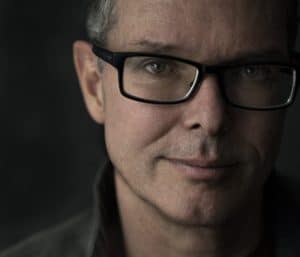
Within Okuden Reiki II we have the mantras Sei heki 性癖but what does it really stand for? Let’s take a closer look.
Seiheki 性癖
Sei 性 nature – inner essence – innate
Heki 癖 disposition – mannerism – habit
A primary dictionary definition of disposition is “a person’s inherent qualities of mind and character.”
We can thus translate sei heki as “natural disposition” or “a person’s natural innate inherent quality of mind and character.”
So when we look at Sei heki, our natural disposition, what is this natural quality of mind?
This natural quality of our mind is emptiness, non-duality.
Mikao Usui pointed out the same with the other Reiki II symbol / mantra hon sha ze sho nen 本者是正念 which can be translated as “my original nature is a right thought”. What is this right thought? Emptiness – nonduality.
Mikao Usui also pointed this out with the Reiki III symbol and mantra dai Kômyô 大光明 – this symbol / mantra stands for our inner great bright light, our essence which is emptiness, nonduality.
And when we take a closer look at the precepts, we see the same thing: emptiness – nonduality. Within the first two precepts, for example, the word no or not, as in anger not and worry not, points towards emptiness.
“In Buddhism, we use the words no or not to show that nothing has its own separate existence, everything is interconnected and produced by interdependent co-origination.” – Dainin Katagiri, Each Moment is the Universe.
Then we have compassion in the precepts. True compassion is a manifestation of emptiness.
“The natural disposition of emptiness arises as great compassion and you enter into unbiased compassionate love.” Khenchen Palden Sherab Rinpoche
Thus again and again we can see what Mikao Usui pointed out to us. And each time he pointed out the same thing: emptiness – nonduality. Why? Because it is our natural inherent quality of mind.
“When ki follows this guideline it becomes straight and proper. When it does not it becomes crooked. Inside humans and objects this guideline or principle is also known as “nature” (sei 性). When nature is activated it is called the great mind/heart, the mind/heart of the Way, or straight mind. Conversely, what turns against nature is called the deluded mind. The point that Takuan is trying to make, of course, is that the mind/heart should try to follow the guideline, that is, the Way. This is how everything becomes peaceful.”
– Juhn Y. Ahn – Worms, Germs, and Technologies of the Self – Religion, Sword Fighting, and Medicine in Early Modern Japan
As you can see in the above quote by Juhn Y. Ahn, Zen Master Takuan Sōhō (1573 – 1645) also pointed to our nature sei 性 and that it is inside of us, our inner guideline or principle.
But that is not so easy to really discover and this is why Mikao Usui placed some very specific meditation practices within his system, so that through these practices we can lay bare our natural disposition. But if we do not practice Mikao Usui’s teachings and practices in the right way then it will be very hard to lay bare our natural state of mind, emptiness – nonduality.
For example, we might have all the right ingredients of a cake but if we do not mix them together in the right way we do not get the desired cake. We have to put the ingredients together in a very specific way else the result will not be what we want. If we do not put our cake together in the right way, it might even become non edible!
This is the same within Mikao Usui’s teachings. We have to practice these teachings the right way else we might never rediscover our natural disposition, sei heki, emptiness – nonduality.
A very well known Japanese Zen master states: “Sei heki is not about explanation, all understanding needs to be let go of, and there you find zen.”
Thus it is only through sitting on our butt – practicing diligently, as one version of the precepts says – that we can have the direct experience of our natural disposition, our essence, sei heki. And ultimately it is how we can explain and find within ourselves the unexplainable: emptiness – nonduality.

